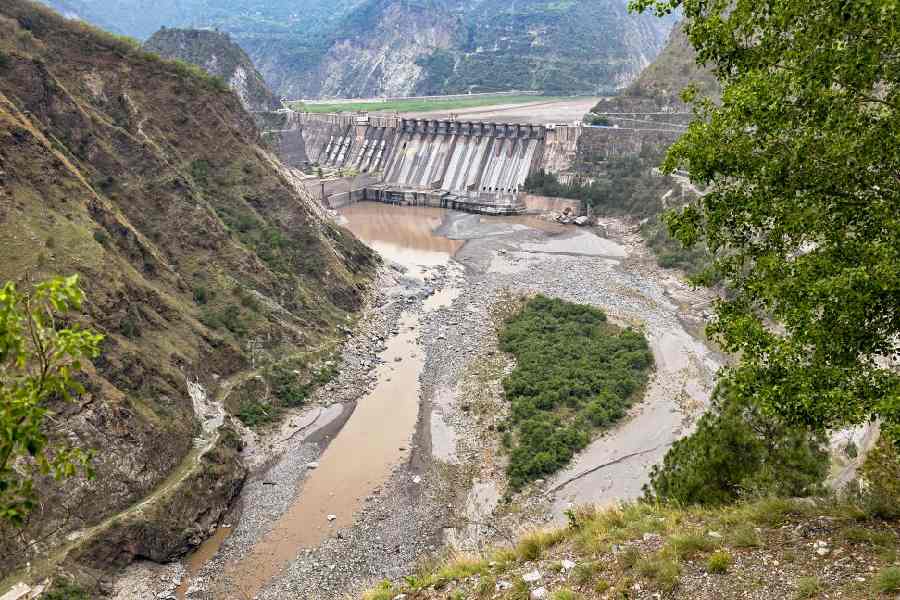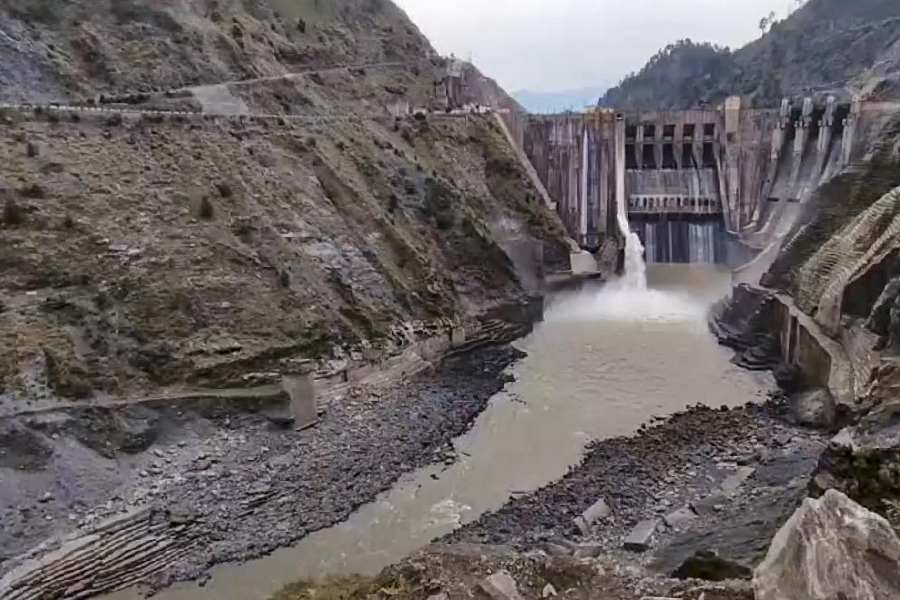India drastically reduced the flow of the Chenab’s waters to Pakistan on Sunday, apparently in keeping with its post-Pahalgam decision to hold the Indus Waters Treaty in abeyance.
The move caused the Chenab’s water levels to hit a historic low close to the Pakistan border. Local men and women on Monday swarmed the Akhnoor area of Jammu, some 20km from where the Chenab enters Pakistan’s Sialkot district, to enjoy a rare crossing of the river on foot.
People clicked pictures standing in the middle of the river, normally known for its strong current.
Officials said the flow from the Baglihar and Salal hydroelectric dams was nearly stopped on Sunday. The dams’ gates remained closed for hours on Monday too, a source said.
Indications of the restoration of supply came in the afternoon, with loudhailer-fitted vehicles approaching the banks to ask people to stay away from the river.
Officials of the public-sector hydropower company, NHPC, were tightlipped about the development but the head of the BJP’s IT cell, Amit Malviya, lauded Prime Minister Narendra Modi for the initiative.
“It takes political will to make tough decisions in India’s interest, and Prime Minister Modi has demonstrated that through his actions,” he said on X.
“This is the muscular Modi Doctrine, firm and unwavering in its fight against terrorism. Water and the blood of our citizens cannot flow together. Let that be clear.”
An official said: “The closing of the gates of these dams turned the riverbed almost completely dry at places.”
India had on April 23 suspended the Indus Waters Treaty — under which it shares the river system’s waters with Pakistan — in retaliation to the previous day’s attack in Pahalgam that killed 25 tourists and a local guide.
However, the absence of enough storage capacity for excess water means India’s stoppage of these rivers’ flow can only be sporadic, experts have said.
Reports say the authorities last week reduced the flow from the Uri hydroelectricity project, and then released the water abruptly, causing a surge of the Jhelum on the other side of the Line of Control.
Ramsur Sharma, a 75-year-old local man, told reporters in Akhnoor that he had never before seen the Chenab’s flow halted. “The Chenab is known for its ferocious current, but today there was almost no water,” he said.

The Salal dam on the Chenab in Jammu and Kashmir’s Reasi district on Monday. PTI
Under the 1960 Indus Waters Treaty, India had agreed to limit its claim on the three western rivers — the Jhelum, Chenab and the Indus (all flowing from Jammu and Kashmir to Pakistan) — in lieu of control over three eastern rivers: the Sutlej, Beas and the Ravi.
Kashmiri politicians have long claimed that the treaty – which disallows the construction of big dams in Jammu and Kashmir – has hobbled the region’s economy by severely limiting hydropower generation.
When India announced the suspension of the treaty, Pakistan had termed it a potential act of war. Former foreign minister and Pakistan People’s Party chairman Bilawal Bhutoo-Zardari had warned that “either water will flow in our Indus or their blood will”.
Sources said the water from the Chenab and the Jhelum was being halted and released without informing authorities on the other side, although the treaty requires India to provide advance warning in such circumstances.
While India is being seen as weaponising water against Pakistan, the Centre has so far desisted from taking any military action in retaliation to the Pahalgam massacre.
The only visible hostility on the borders has been the daily ceasefire violations, which the Indian army has blamed on Pakistan.
No casualties have been reported so far.










